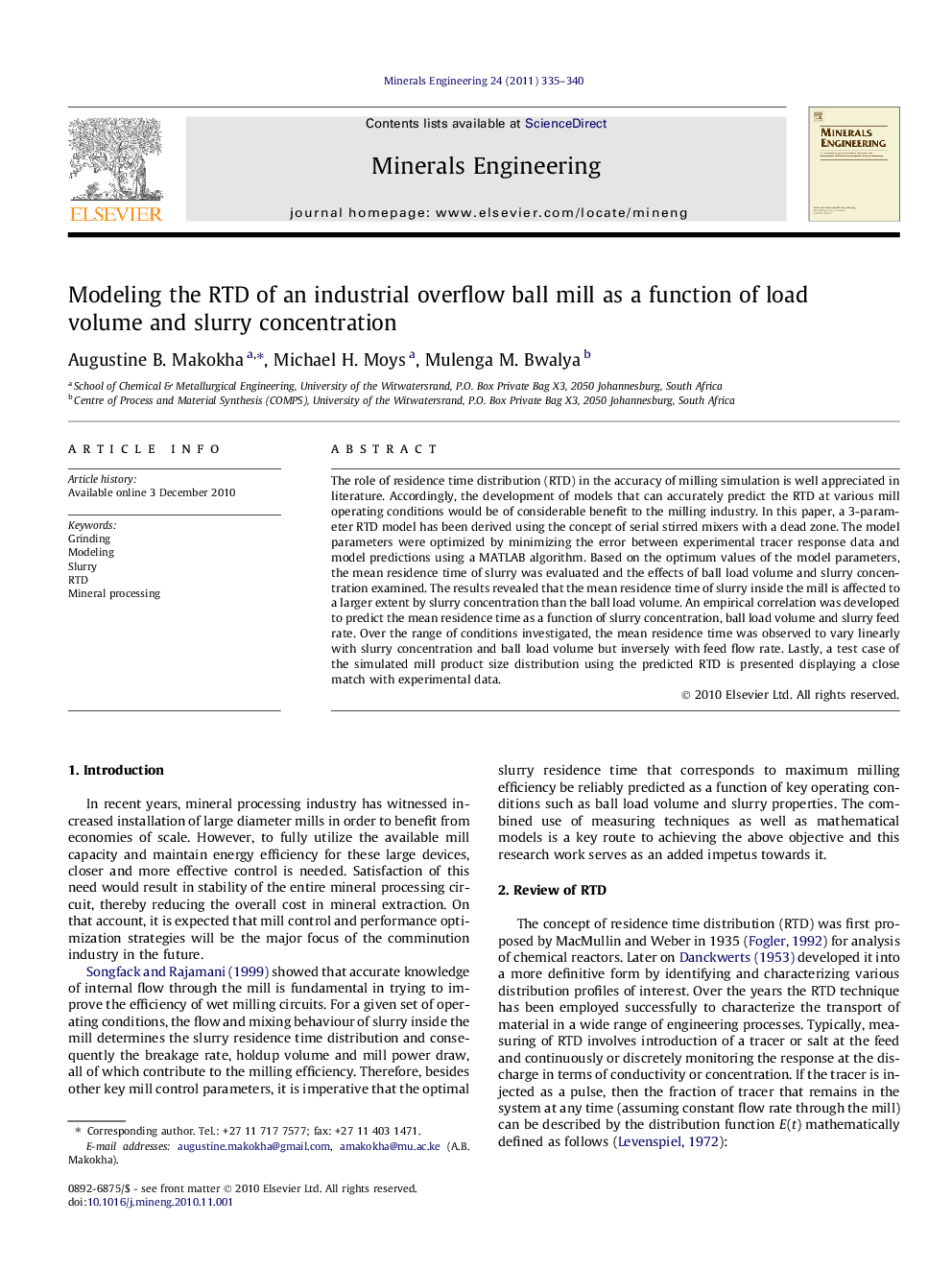| کد مقاله | کد نشریه | سال انتشار | مقاله انگلیسی | نسخه تمام متن |
|---|---|---|---|---|
| 234083 | 465384 | 2011 | 6 صفحه PDF | دانلود رایگان |

The role of residence time distribution (RTD) in the accuracy of milling simulation is well appreciated in literature. Accordingly, the development of models that can accurately predict the RTD at various mill operating conditions would be of considerable benefit to the milling industry. In this paper, a 3-parameter RTD model has been derived using the concept of serial stirred mixers with a dead zone. The model parameters were optimized by minimizing the error between experimental tracer response data and model predictions using a MATLAB algorithm. Based on the optimum values of the model parameters, the mean residence time of slurry was evaluated and the effects of ball load volume and slurry concentration examined. The results revealed that the mean residence time of slurry inside the mill is affected to a larger extent by slurry concentration than the ball load volume. An empirical correlation was developed to predict the mean residence time as a function of slurry concentration, ball load volume and slurry feed rate. Over the range of conditions investigated, the mean residence time was observed to vary linearly with slurry concentration and ball load volume but inversely with feed flow rate. Lastly, a test case of the simulated mill product size distribution using the predicted RTD is presented displaying a close match with experimental data.
Slurry residence time distribution in a large overflow discharge ball mill has been adequately described by 3-serial mixers with a plug flow component. The model yielded a plausible fit to experimental data. Using this model, it has been possible to assess the effect of two important mill operating variables: load volume and solids concentration, on slurry residence time distribution. This information is vital for milling process control. Failure to tune the mill appropriately to achieve desirable slurry transport behaviour may result in poor milling performance and corresponding high energy expenditure.Figure optionsDownload as PowerPoint slideResearch highlights
► The in-mill slurry RTD has been sufficiently described by a model comprising one large and two small perfect mixers in series with a plug-flow component.
► The mean residence time correlated linearly with slurry concentration and ball load volume but inversely with feed flow rate.
► The results are indicative of a positive effect of RTD on the prediction accuracy of mill product size distribution.
Journal: Minerals Engineering - Volume 24, Issues 3–4, February–March 2011, Pages 335–340